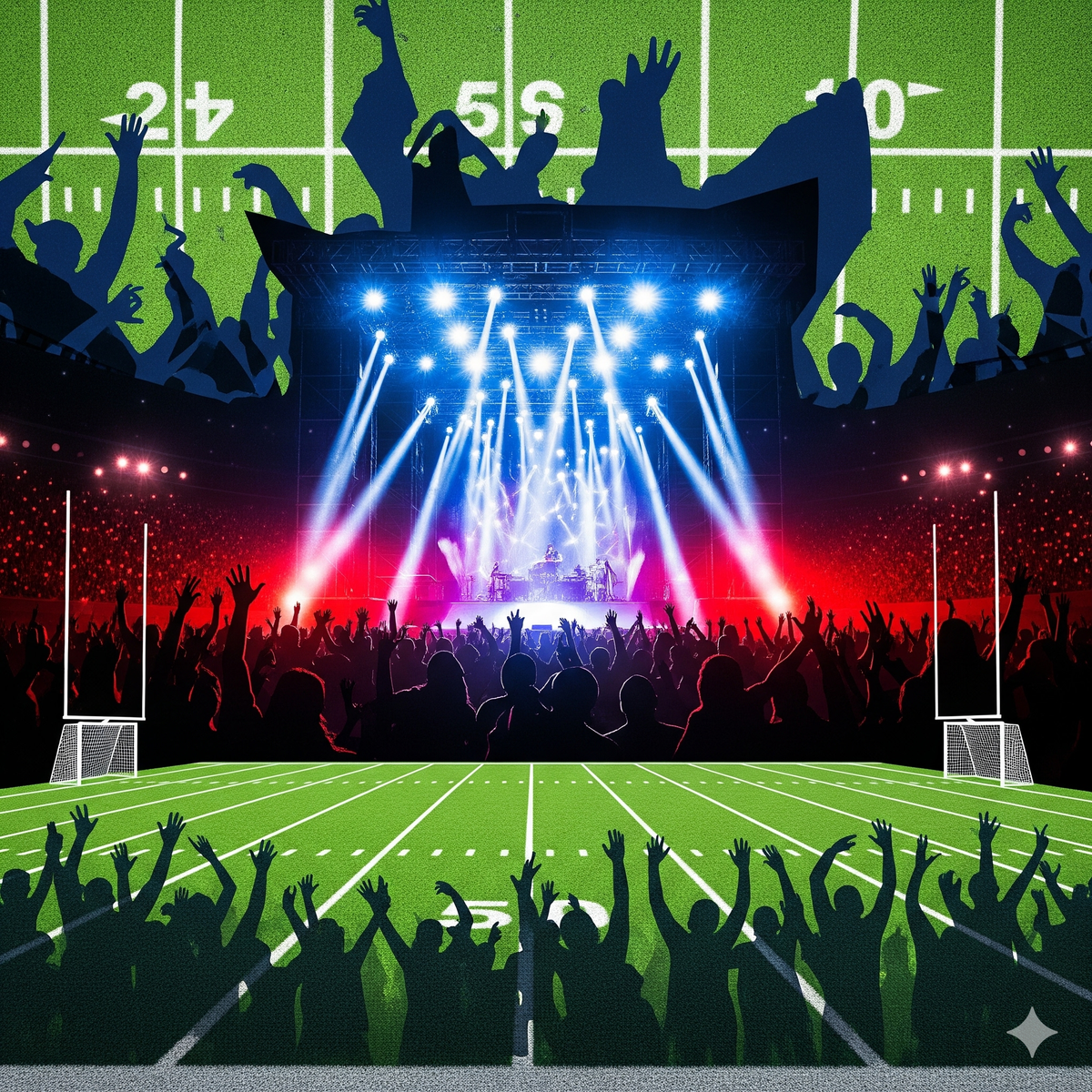Super Bowl or Super Show? How Halftime Became Bigger Than Football
The Super Bowl halftime show has eclipsed football itself transforming from marching bands into a global spectacle of stars, politics, and viral moments. Entertainment, not touchdowns, now defines America’s biggest stage.

Introduction: When the Music Drowned Out the Game
For decades, the Super Bowl was known as the grand finale of America’s favorite sport. But in 2025, ask the average viewer what excites them most about the event, and you’ll hear a surprising answer: the halftime show. What began as a small marching band intermission has transformed into one of the biggest global entertainment spectacles, with stars like Beyoncé, The Weeknd, Rihanna, and Usher commanding audiences that sometimes outshine the game itself.
This blog takes a deep dive into how halftime hijacked football’s spotlight, turning America’s sports stage into a pop-culture carnival that reshaped advertising, celebrity power, and global entertainment.
The Birth of a Sideshow: Marching Bands and Modesty
The first Super Bowl halftime show in 1967 was anything but glamorous. Marching bands from the University of Arizona and Grambling State University performed with basic formations and patriotic music. It was simple, functional, and forgettable.
For the NFL, football was the show, and halftime was just a bathroom break. But TV networks saw the potential of using halftime to keep viewers glued to screens. The seed was planted: what if halftime wasn’t a pause, but a performance?
1993: The Michael Jackson Moment
The true turning point came with Michael Jackson’s 1993 halftime show. Before Jackson, halftime ratings dipped during the break as viewers switched channels. After Jackson moonwalked across the Rose Bowl stage, those numbers skyrocketed.

It wasn’t just a performance it was a proof of concept: superstar entertainment could pull bigger numbers than football itself. Jackson’s show drew more viewers than the game’s second half, a trend that would repeat itself many times over the coming decades.
From Intermission to Global Stage
Once the Jackson effect was undeniable, halftime turned into the NFL’s entertainment crown jewel. What followed was a parade of icons:
- Prince (2007): Singing “Purple Rain” in the rain, creating one of the most legendary live performances in music history.
- Beyoncé (2013): Power, politics, and pop her show became a cultural flashpoint, complete with a Destiny’s Child reunion.
- Shakira & Jennifer Lopez (2020): A bilingual, multicultural performance that embodied America’s shifting demographics.
- Rihanna (2023): Pregnant and floating above the field, redefining what a solo act could do.
The Super Bowl halftime show is no longer about music alone it’s about statement, symbolism, and spectacle.
Why Halftime Became Bigger Than Football
1. The Global Audience Shift
While the NFL remains America’s obsession, football doesn’t translate worldwide. The halftime show, however, does. From India to Brazil, millions who don’t understand football tune in to watch megastars they know. In some countries, promos don’t even advertise the game they only push the halftime performer.
2. The Social Media Effect
A touchdown lasts 10 seconds; a halftime moment lasts forever online. Beyoncé’s power pose, Lady Gaga’s aerial dive, or Katy Perry’s “Left Shark” instantly became memes. Viral moments extend the halftime show’s relevance beyond Sunday night, dominating feeds for weeks.
3. The Advertising Power Grab
Brands realized halftime was prime real estate. With commercials costing $7 million for 30 seconds, the show became the ultimate product placement platform. Think Pepsi, Apple Music, and countless fashion tie-ins. The halftime show turned from performance into commercial-cultural hybrid.
4. Celebrities Outweigh Athletes in Star Power
Ask someone outside the U.S. to name a Dallas Cowboys player they might struggle. Ask them to name Rihanna, Beyoncé, or Eminem, and they’ll light up. Celebrities carry global recognition that athletes rarely match.
The Economics of the Super Show
Ironically, halftime performers aren’t paid traditional fees. Instead, the NFL covers production costs (sometimes up to $15 million) while artists reap massive benefits:
- Streaming spikes: After Rihanna’s show, her digital sales jumped 390%.
- Tour boosts: Shakira and J.Lo’s world tours sold out faster after their joint performance.
Cultural equity: Performing at the Super Bowl is now considered the pinnacle of pop credibility.

For artists, it’s not about money upfront it’s about global brand expansion.
The Dark Side of Halftime Spectacle
1. The Political Minefield
Performing at the Super Bowl isn’t neutral. Beyoncé’s 2016 show included Black Panther-inspired dancers, sparking backlash. Artists like Cardi B and Rihanna at times turned down offers over political disagreements with the NFL’s handling of Colin Kaepernick. Halftime has become a political stage, whether artists want it or not.
2. The Overshadowing Problem
For players, there’s an irony: they battle their entire careers to reach the Super Bowl, only to be overshadowed by a 15-minute concert. Many argue halftime has become a separate event altogether, with some fans watching exclusively for the performance.
3. Creative Pressure
Every year, halftime faces the impossible question: Who can top last year? The expectation for bigger, louder, more viral shows risks creative burnout. As critics point out, not every artist can or should be forced into a “spectacle arms race.”
Super Bowl LVIII & Beyond: Where Entertainment Heads Next
In 2025, as Apple Music continues its partnership with the NFL, halftime is evolving again. Speculation swirls about potential hologram cameos, AI-powered light shows, and even interactive digital concerts synced with smartphones.
The NFL is no longer just selling a game it’s selling the most-watched entertainment event on Earth. And halftime is the hook.
Future possibilities:
- Virtual reality halftime experiences where fans watch from the stage.
- AI-curated setlists customized for different regions.
Crossover events with global icons outside music think actors, influencers, or even esports stars.

Super Bowl or Super Show?
The question is no longer rhetorical. For many, the halftime show has already become the main event. In 1993, Michael Jackson proved music could outshine football. In 2025, the balance has fully tipped.
The Super Bowl is still a championship game but the halftime show is America’s most important cultural mirror. It reflects the year’s politics, music, memes, and marketing. It tells us where entertainment is headed. And in a world of fragmented audiences, it’s the last true shared cultural experience that brings 100 million people together.
Conclusion: Entertainment Is the New Champion
Once upon a time, halftime was about marching bands. Now, it’s about megastars floating above stadiums, fashion trends launched in real time, and viral memes that last longer than the game’s score.
The NFL may host the Super Bowl, but the halftime show has stolen the spotlight. In a media-saturated world where attention is currency, the Super Show has become bigger than the Super Bowl itself.




